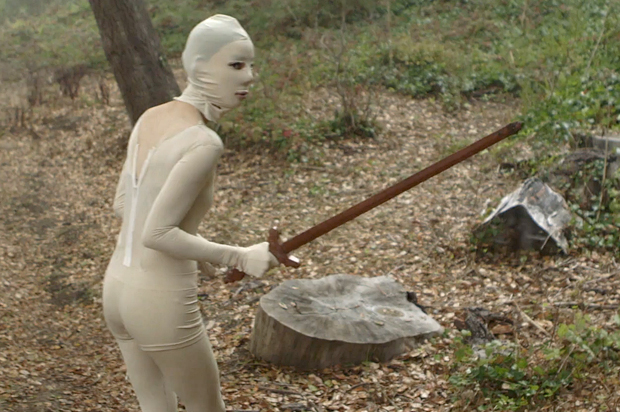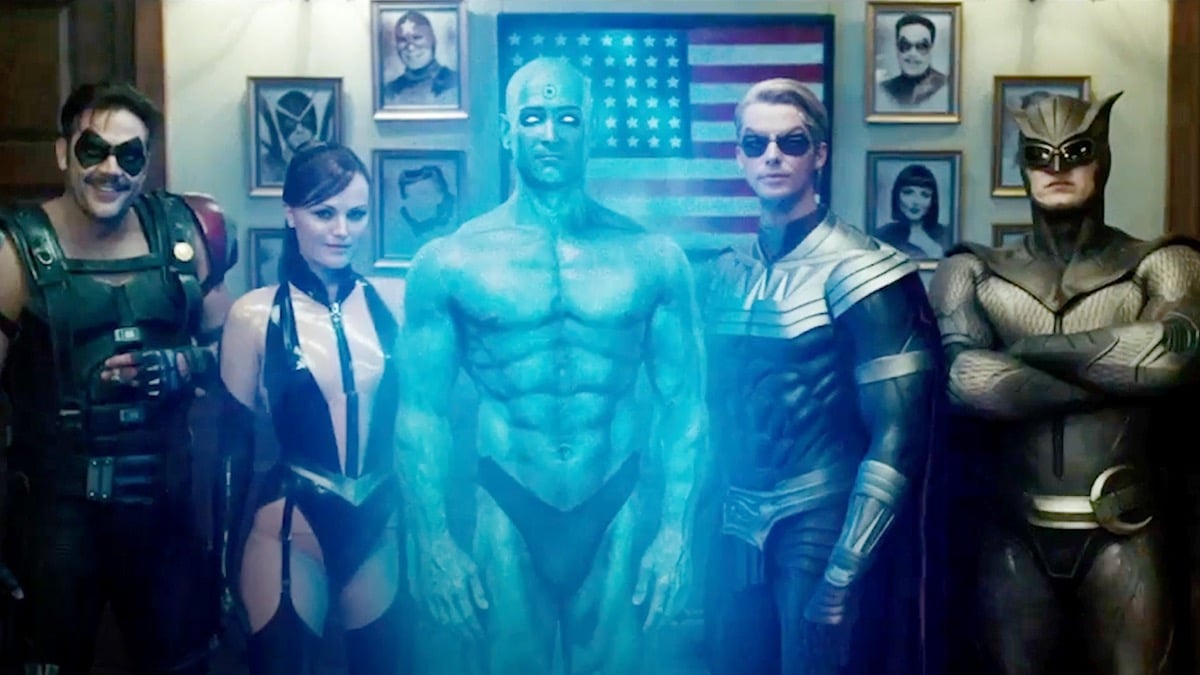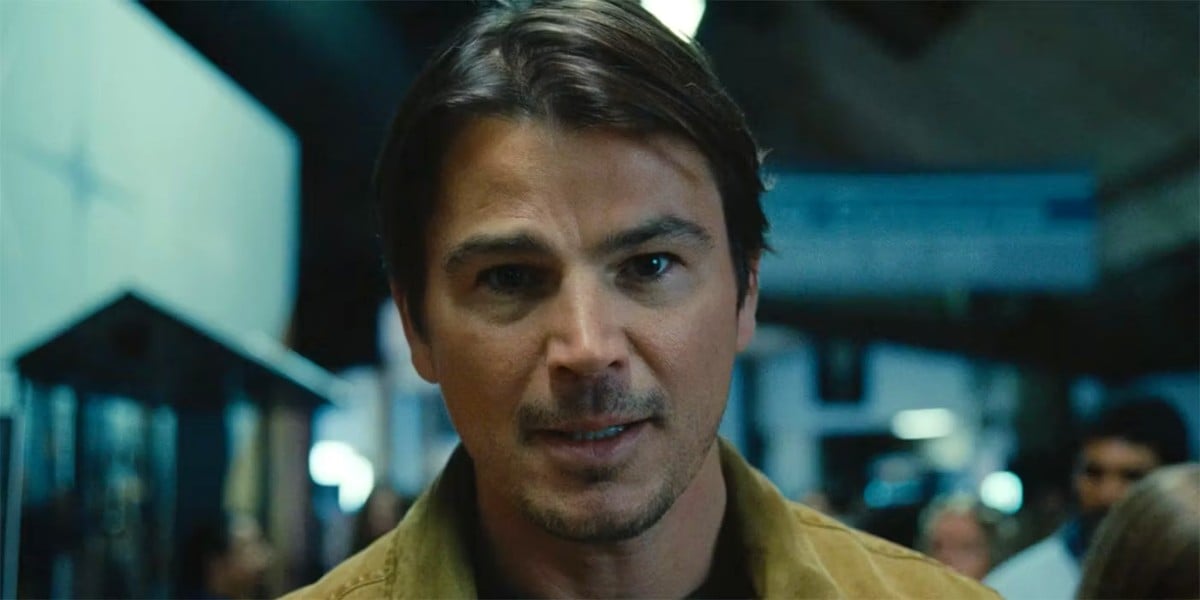Available on VOD starting today, Amplify Releasing’s Felt is the result of a unique creative process. Artist Amy Everson stars as herself, and co-wrote the script, which incorporates both documentary and fantasy elements, with director Jason Banker.
Speaking to The Mary Sue via email, Everson talked about the difficulties of working with a male collaborator on Felt, what it was like to write her real life onto the screen, and what she hopes audiences will take away from the film. [Trigger warning for discussion of rape and sexual violence.]
The Mary Sue: Could you talk a little about how your collaboration with director Jason Banker originated, and what your partnership on the film entailed?
Amy Everson: A few years ago, Jason Banker was in San Francisco for a commercial shoot, and we had a chance meeting at a music venue I frequented every week. He and his friend weren’t familiar with the area, so I showed the two of them around, introducing them to my costumes and art along the way. They wound up shooting some footage of me improvising in my costumes in front of the camera, which they then set to music.
Around a year later, Jason called me and expressed interest in collaborating on a film. As with the music video, he wanted to capture my costumes and artwork, only this time, he wanted to explore the meaning of my creations. Rather than create a narrative outright, Banker was more interested in approaching the story as he did his previous film, Toad Road, which was a hybrid of reality and fantasy. Our movie was to begin life documentary-style, and then gradually weave in fictitious elements once we found the story we wanted to tell.
Before long, Jason began making regular stops in San Francisco. Whenever he was in California for a commercial shoot, or when he was able to, he’d drop in for short periods of time and we’d get to work. Sure enough, in a little under the course of a year, we went from capturing moments of my real life to staging scenarios, with real friends and strangers, for me to interact with.
TMS: What was it like to collaborate with a male director and co-writer on a project about rape culture? Was there an experiential gap between the two of you that you had to work around?
Everson: The experiential gap between Jason and myself is huge, and it’s that distance between us that, I believe, ultimately informed the story we were telling. I wanted to make something true to my experience being a woman, and while he was definitely receptive to telling my story, he didn’t always see the pervasive misogyny in the world around him and, therefore, couldn’t quite understand my experiences. He wanted to make something edgy. For every Thelma & Louise I gave him, he threw two Lars von Triers at me. Needless to say, Jason and I didn’t always see eye-to-eye.
Felt wasn’t knowingly planned as a critique or examination of rape culture. The film started as a documentation of the hostile and misogynistic attitudes I regularly encountered and evolved into a dark fantasy of my lashing out against it, and, to some degree, Jason himself. I was trying to persuade Jason that there was a fundamental difference in the way females are treated, and it was infuriating. It was my way of presenting to him a climate that continuously devalued my voice and made light of the sexual violence I had weathered, and what I wanted to do about it.
TMS: What were some of your reservations while working on Felt, and what has the response been like so far?
Everson: As a survivor of sexual and physical violence, I had been groomed to believe that my experiences and my voice didn’t matter, so any excitement I could have had in sharing my story was offset from the beginning of production. On one hand, I had a filmmaker encouraging me to bare my soul and speak my piece for his camera, but on the other, based on my own personal experiences of being exploited and abused and by Jason’s love of problematic films, I had no justifiable reason to believe that this guy would put something together that was sensitive and thoughtful.
Early cuts of Felt concerned me, but my partner, Michael, who had seen the film, was convinced my story would resonate with people, as it did him. He believed in me, and helped me to process the film beyond the scope of my own involvement. His support of the film was very encouraging, and led me to believe that it wasn’t the disaster I feared it was going to be.
It wasn’t until the world premiere of the film at Fantastic Fest, though, that I could see how Banker had shaped Felt into something that was honest, heartbreaking, and spoke to the consequences of living in a male-dominated society. Knowing my story has articulated something that so many people have recognized on screen was, and continues to be, a reminder that I have every right to my voice.
TMS: I’ve seen Felt referred to by several reviewers as a horror movie. How do you feel about that description?
Everson: I can appreciate Felt being perceived as a horror film. In a sense, it is, albeit an untraditional one. It is terrifying navigating a world that is openly hostile towards females, and I think that Jason captured the disorienting and fearful unease that comes attached to living as a woman. The editing and imagery is jarring at times, which mirrors the nightmare of living with trauma and the dissociation that comes with it.
In regards to the horror community’s position on Felt, I want to say that since the very first screening of the film, they have been among the most sensitive and thoughtful in supporting it. This surprised me, but I’ve since come to appreciate and embrace this reception. The horror genre is bombarded with sexualized violence and sensationalized torture. Felt foregoes depicting these things, and if it’s being ushered into the pantheon of horror, then I think it must be as a welcome respite. That community knows tropes better than the average movie goer, so I feel like they must recognize that Felt has many elements of a standard horror movie but without many of the more problematic, lazy go-tos that filmmakers cling to.
TMS: In Felt, the character Amy wears several suits. Were these suits something you had designed prior to the film or were they made in concurrence with the movie?
Everson: A lot of the costumes predate the production of the film. The “naked man-and-woman suits”—undergarments with genitalia and nipples sewn in—were what initially provoked Jason to make a film with me. As we were developing the story, we recognized a need to make more art that could inform the themes of the film. Jason wanted the costumes to evolve into more elaborate pieces as the story progressed, and so throughout filming, I built the full skin-suit and the skin masks in accordance with the story that was developing.
TMS: Could you talk some about what the suits mean to you personally, particularly in regards to gender?
Everson: When I built and began wearing the man-and-woman suits, I hadn’t yet begun to address my trauma. So when I adorned them—particularly the male one—it was almost exclusively as a party trick. I wore these costumes eager to make dirty jokes with strangers, take
lewd photos with my friends, and did so entirely without the insight that trauma-specific therapy and feminist analysis have brought me.
It’s apparent to me now, reflecting on the costumes and as depicted in the film, that the costumes were an expression of the sexual violence I had survived, simply on account of my being a female. Since even before I knew what sex was, and even throughout filming, I was subject to repeated violations by abusive, violent men. Rather than go on tolerating the abuse, I had begun internalizing precepts of masculinity to protect myself. This camouflage encompassed everything from sexualizing my language to imbuing myself with the ultimate symbol of power that had abused me: a penis.
My costumes allowed me to embody the very personification of the men that had harmed me. They allowed me to become the monster that had hurt me and, in turn, reinforced those same characteristics in myself. But becoming a monster, in the interest of keeping the monsters away, is not and was not a sustainable way of living for myself. In healing, I’ve had to challenge these qualities in myself and move forward from the Amy I was.
TMS: At the end of Felt [mild spoilers to follow]
TMS: In making the movie, did you and/or Banker have anything specific in mind that you wanted audiences to take away from the film, and if so, what kind of edits/revisions did you make to help clarify or serve that message?
Everson: I always wanted to make a film that was honest and sympathetic in its portrayal of the female experience, but the through line of accomplishing this was an ongoing discussion and learning process for both Banker and I.
Towards the beginning of production, for instance, we believed that in order to accomplish our goal, it would be necessary to actually depict what had been done to me in my real life. The first actor that Jason reached out to, though, refused, citing that recreating the worst of my abuse could seriously harm me. I had very little self-worth at the time, and hadn’t yet begun to address my own trauma; I would have been willing to put myself through torture or, to be honest, cut myself if Jason had asked me to do so.
So the actor’s choice was, simply, a blessing. I’m grateful we never veered back into that direction, as it is very clear to me now that it’s not necessary to show or spell out specific acts of harm against women for an audience to empathize with them. I had seen other films depicting sexual violence, and many of them seemed to have a habit of sensationalizing it without exploring the consequences on the victims. Many, many male filmmakers have, and continue to use rape either for shock value or as a plot device in order to allow some male to get vengeance. I find these filmmakers, who most certainly do not have a sophisticated understanding of either trauma or their own ignorance, offensive. So it’s very good that Banker didn’t make a film in that same vein.
The rest of production was wrought with comparable conflict and heated conversations between Jason and me. He’d make suggestions that supported our goals, and I’d dive into them, or he’d make suggestions which were problematic or offensive, and we’d argue. Sometimes
we’d find middle ground. Though my low self-worth was consistent throughout filming, I always knew that I didn’t want Felt to be irresponsible in its depiction of women, even if those ideals were continually evolving.
It was in the process of post-production, though, when I feel I was able to offer some of my critical feedback to Jason. Sometime after filming, I began making life choices that were conducive to healing my trauma, working with an insightful therapist, engaging in a respectful, loving relationship, cutting out toxicity and setting personal boundaries for myself. Compounded, these life choices helped me to understand the film with a more critical eye. Jason was receptive and sensitive towards my growth, and was very good about sending me updated cuts of the film, as well as making edits and revisions in accordance with my evolving values.
TMS: What are your thoughts on how violence is traditionally perceived as a masculine trait or state of being?
Everson: Masculinity is not an innate state of being; males do not develop a thirst for violence in the womb any more than females have some flamboyant natural desire to wear pink. Masculinity, and femininity, are social constructs that are hard-wired into the sexes culturally and reinforced throughout their lives in popular entertainment, tradition, and a male-dominated scientific community that insists there is such a thing as a male versus female brain but has actually never conclusively proven this true.
As masculinity is based on dominance, it brings with it a cluster of characteristics—strength, aggressiveness, machismo—that inherently breed violence. But, again, masculinity is not biologically-rooted, and these traits are not mutually exclusive to males, per se. As masculinity is a socialized performance (designed to keep femininity—its submissive, docile, obedient and compliant counterpart—the subservient sex), like all performances, the part can be learned by anyone who studies it.
What’s tragic is that while in the film Amy recognizes, to some degree, that masculinity and femininity are performances, she doesn’t opt out altogether. She indulges in the fantasy of taking the lead role of the masculine, aggressive male. She learns all the lines, prepares the costume, and spends her time on edge, just waiting for that big break to make her debut.
Felt is available on VOD starting today.
—Please make note of The Mary Sue’s general comment policy.—
Do you follow The Mary Sue on Twitter, Facebook, Tumblr, Pinterest, & Google +?











